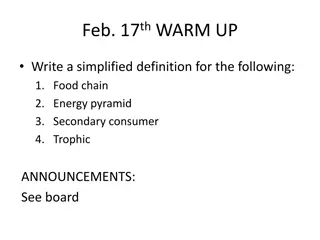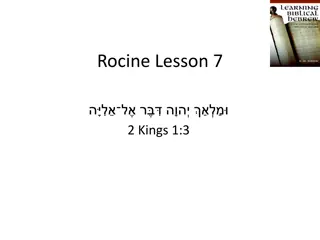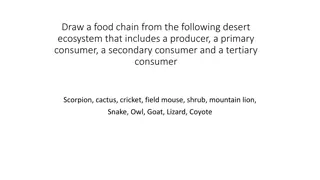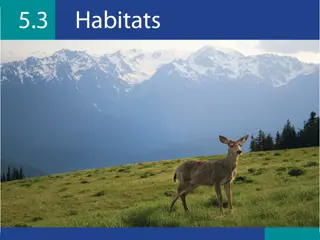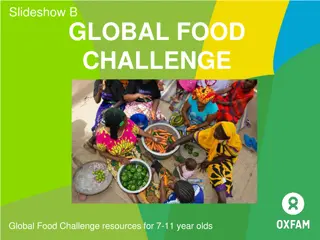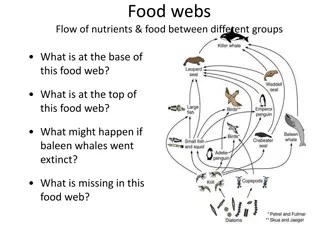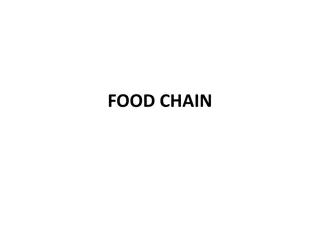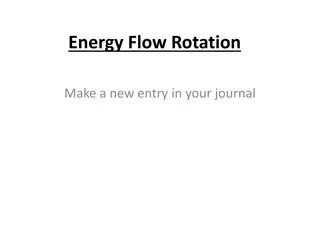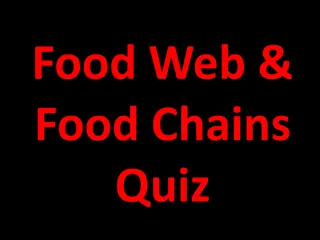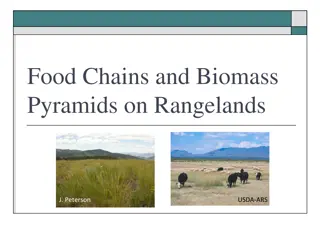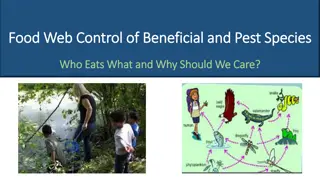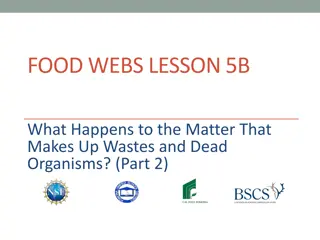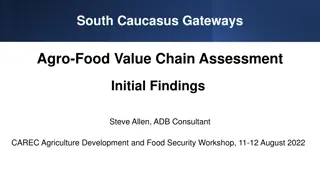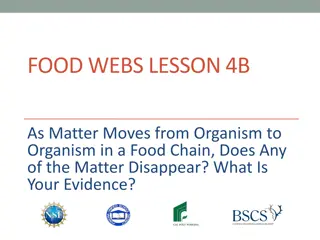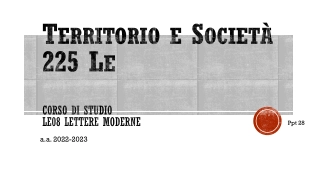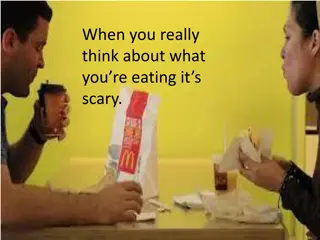Understanding Interdependence in Food Chains and Webs
Interdependence plays a crucial role in ecosystems where organisms rely on each other for survival. This interconnection is demonstrated through food chains and webs, highlighting the flow of energy and nutrients. Toxic materials can accumulate in food webs, disrupting the delicate balance. Changes in predator-prey dynamics, habitat fragmentation, and diseases impact animal populations, emphasizing the complexity of ecological systems.
Download Presentation

Please find below an Image/Link to download the presentation.
The content on the website is provided AS IS for your information and personal use only. It may not be sold, licensed, or shared on other websites without obtaining consent from the author. Download presentation by click this link. If you encounter any issues during the download, it is possible that the publisher has removed the file from their server.
E N D
Presentation Transcript
Disruption to Food Chains & Food Webs Progress Indicators: Describe the interdependence of organisms Describe how toxic materials can accumulate in a food web. Do Now Activity: What does a food chain show us? How is energy lost between organisms in a food chain?
Interdependence All species live in ecosystems composed of communities of animals, plants and other organisms that are dependent on each other and are adapted to particular conditions Plants need the nutrients from animal droppings and decay Plants produce food by photosynthesis Animals eat other animals Question: How are animals and plants dependent on each other within a community? Animals eat plants Animals pollinate plants Animals use plant and animals materials to build nests/shelters
What affects animal populations? 1. What would happen to an animal if the number of predators increased? 2. How could changes in the number of prey affect predator populations? 4. A factory has been built next to the forest how would this affect animals in the local ecosystem? 3. How could disease affect population numbers? Task: Choose one and jot an answer down, you have 4 mins, one for each question
Self-assessment: 1. If the number of predators increased, the animal population that is being predated would decrease in numbers. 2. If the number of prey increased, the number of predators would eventually also start to increase as there is more food available. If the numbers of prey decreased, the number of predators would decline due to lack of food sources. 3. If a disease was present within an animal population, the number of organisms would begin to decline. This would have a knock-on effect to other animal populations. 4. This could cause habitat fragmentation, meaning some populations of animals are split up and unable to mate. Habitat destruction could occur, meaning some organisms have lost their home. Overall, this would have a negative impact on animal populations in the local area.
Food Webs Most animals eat more than just one type of organism, scientists can show this in a food web. Great White Shark Clown Fish Green Turtle Blue Clownfish 300px-Diatoms_through_the_microscope Cleaner Shrimp Zooplankton Phytoplankton
Food Webs Great White Sharks eat clown fish, what will happen to the number of clown fish if the sharks become vegetarian? Great White Shark Clown Fish Green Turtle Blue Clownfish 300px-Diatoms_through_the_microscope Cleaner Shrimp Zooplankton Phytoplankton
Food Webs If clownfish numbers increase what will happen? Great White Shark Clown Fish Green Turtle Blue Clownfish 300px-Diatoms_through_the_microscope Cleaner Shrimp Zooplankton Phytoplankton
Food Webs What will happen to the Blue Clownfish if a disease wipes out the small invertebrates? Great White Shark Clown Fish Green Turtle Blue Clownfish 300px-Diatoms_through_the_microscope Cleaner Shrimp Zooplankton Phytoplankton
Self-assessment: 1. Great White Sharks eat clown fish, what will happen to the number of clown fish if the sharks become vegetarian? The clownfish would lose one of their main predators, which could mean that their numbers would most likely start to increase. 2. What effect will an increase in clownfish have? If there are now more clownfish, then more zooplankton will be consumed to support this larger animal population. This would mean zooplankton numbers would decline. 3. What will happen to the Blue Clownfish if a disease wipes out the small invertebrates? Blue Clownfish numbers could start to decrease if a disease wipes out the small invertebrates, as there would be a smaller food source available for the Bluw Clownfish to consume.
Stable communities Task: Read the information on stable communities and answer the following questions: 1. What is a stable community? 2. Name three examples of stable communities. 3. Name 2 organisms, one animal and one plant, that you would expect to find in two of these examples of a stable community. 4. Explain why it is important that a community is stable.
Self-assessment: 1. A stable community is one where all of the species and the environmental factors are in balance so that population sizes remain fairly constant. 2. Three examples of a stable community are mature coral reefs, oak woodlands and tropical rainforests. 3. Mature coral reefs tropical fish, sea turtle, coral. Ancient oak woodland oak trees, foxes, rabbits, bracken, fern, spiders. Tropical rainforest banana tree, rubber tree, toucan, marmoset, tree frog. 4. It is important for a community to be stable as this means that the environmental factors affecting the survival of populations are in balance, therefore the numbers within a population of organism remains fairly constant. This means that thousands of species can be housed within a stable community, and even though changes will occur the stability of the relationships between the organisms means that they will be able to withstand these changes and survive.
Bioaccumulation Check your answer Task: Follow the link below to read the article on killer whales, as a class try to come up with a definition for bioaccumulation . Bioaccumulation is when toxins build up in the food chain. The animals at the top of the food chain the apex predator are the organisms which are affected the most severely. Example: Build up of PCB toxin in orcas: Krill 1ppm Algae 0.5ppm Cod 2ppm Leopard seal 12ppm Orca 36 ppm ppm = parts per million Source : http://www.bbc.co.uk/nature/14663732
Plenary ~ Write three quiz questions to test your peers on what you have learnt today! Make sure you know the answer


